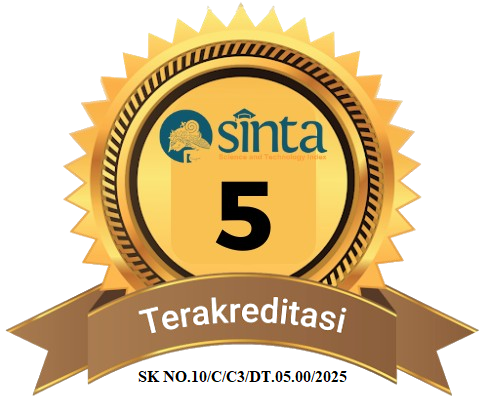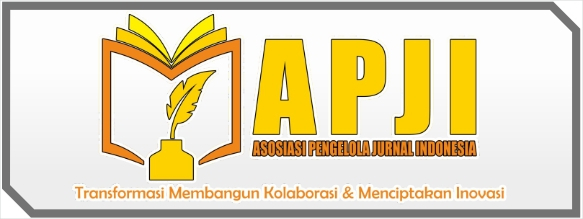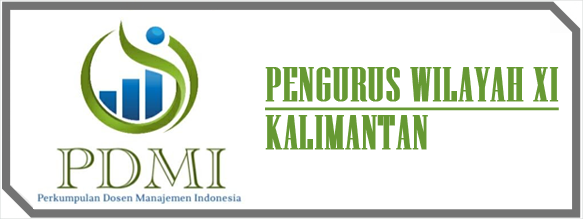EXAMINING THE LINKAGES BETWEEN TECHNOLOGY ADOPTION AND COMPONENTS OF CORN AGRIBUSINESS
DOI:
https://doi.org/10.62394/projmb.v3i1.84Keywords:
technology adoption, agro-marketing, agro-supporting services, agro-industry, agro-input, agro-productionAbstract
This research delves into the complex relationship between technology adoption and the various components of corn agribusiness, with a focus on Indonesia's South Oba District. Corn, a key national commodity, faces challenges in meeting production targets set by the Ministry of Agriculture. This study investigates how technology adoption influences corn agribusiness aspects, including productivity, economic integration, and social and environmental impacts. Utilizing a quantitative approach, the research involves purposive sampling of 70 corn farmers and assesses agribusiness and cultivation technology through indicators like seed usage, soil processing, and agro-input systems. Findings reveal that despite high technology adoption, certain subsystems, notably agro-marketing and agro-industry, require improvement. The study underscores the interdependence between technology adoption and subsystems, emphasizing the need for targeted development in agro-marketing, agro-supporting services, agro-industry, agro-input, and agro-production. Recommendations include enhancing marketing strategies, improving support services, developing the agroindustry value chain, ensuring quality agro-inputs, and implementing sustainable farming practices. This interdisciplinary research aims to provide insights for policymakers, agribusiness practitioners, and researchers to navigate challenges and harness opportunities in the modernization of corn agribusiness.
Downloads
References
Akudugu, M. A., Guo, E., & Dadzie, S. K. (2012). Adoption of modern agricultural production technologies by farm households in Ghana: what factors influence their decisions?
Alahmad, T., Neményi, M., & Nyéki, A. (2023). Applying IoT Sensors and Big Data to Improve Precision Crop Production: A Review. Agronomy, 13(10), 2603.
Anandajayasekeram, P., & Gebremedhin, B. (2009). Integrating innovation systems perspective and value chain analysis in agricultural research for development: Implications and challenges (Vol. 16). ILRI (aka ILCA and ILRAD).
Andriushchenko, K., Ishchenko, M., Sahaidak, M., Tepliuk, M., & Domina, O. (2019). Prerequisites for the creation of financial and credit infrastructure of support for agricultural enterprises in Ukraine. Banks and Bank Systems, 14(2), 63.
Barnard, F. L., Foltz, J., Yeager, E. A., & Brewer, B. (2020). Agribusiness management. Routledge.
Dadi, L. (1998). Adoption and diffusion of agricultural technologies: case of East and West Shewa Zones, Ethiopia. The University of Manchester (United Kingdom).
Das, A., Saha, S., Layek, J., Babu, S., Saxena, R., & Ramkrushna, G. I. (2023). Agricultural Technologies. In Trajectory of 75 years of Indian Agriculture after Independence (pp. 57–78). Springer.
Davis, K., Swanson, B., Amudavi, D., Mekonnen, D. A., Flohrs, A., Riese, J., Lamb, C., & Zerfu, E. (2010). In-depth assessment of the public agricultural extension system of Ethiopia and recommendations for improvement. International Food Policy Research Institute (IFPRI) Discussion Paper, 1041, 193–201.
De Boer, I. J. M., & van Ittersum, M. K. (2018). Circularity in agricultural production. Wageningen University & Research.
Dijkman, T. J., Basset-Mens, C., Antón, A., & Núñez, M. (2018). LCA of Food and Agriculture. Life Cycle Assessment: Theory and Practice, 723–754.
Gunderson, M. A., Boehlje, M. D., Neves, M. F., & Sonka, S. T. (2014). Agribusiness organization and management. Encyclopedia of Agriculture and Food Systems, 1, 51–70.
Guntoro, S. (2011). Saatnya menerapkan pertanian tekno-ekologis. AgroMedia.
Hamilton-Hart, N. (2019). Indonesia’s quest for food self-sufficiency: a new agricultural political economy? Journal of Contemporary Asia, 49(5), 734–758.
Jones, J. W., Antle, J. M., Basso, B., Boote, K. J., Conant, R. T., Foster, I., Godfray, H. C. J., Herrero, M., Howitt, R. E., & Janssen, S. (2017). Brief history of agricultural systems modeling. Agricultural Systems, 155, 240–254.
Kassie, M., Jaleta, M., Shiferaw, B., Mmbando, F., & Mekuria, M. (2013). Adoption of interrelated sustainable agricultural practices in smallholder systems: Evidence from rural Tanzania. Technological Forecasting and Social Change, 80(3), 525–540.
Kemtan. (2010). Rencana Strategis Kementrian Pertanian Tahun 2010-2014.
Khan, N., Ray, R. L., Sargani, G. R., Ihtisham, M., Khayyam, M., & Ismail, S. (2021). Current progress and future prospects of agriculture technology: Gateway to sustainable agriculture. Sustainability, 13(9), 4883.
Kushartanti, E., Suhendrata, T., & Setyaningrum, S. C. B. (2012). Penyebaran dan Tingkat Adopsi Varietas Unggul Padi Inbrida di Kabupaten Demak. Prosiding Seminar Nasonal [Peran Teknologi Untuk Mewujudkan Kedaulatan Pangan Dan Peningkatan Perekonomian Bangsa].
Liu, J., Jin, X., Xu, W., Gu, Z., Yang, X., Ren, J., Fan, Y., & Zhou, Y. (2020). A new framework of land use efficiency for the coordination among food, economy and ecology in regional development. Science of the Total Environment, 710, 135670.
Monteiro, A., Santos, S., & Gonçalves, P. (2021). Precision agriculture for crop and livestock farming—Brief review. Animals, 11(8), 2345.
Muchangi, C. T. (2016). Influence of farmer’s characteristics, agricultural extension and technology specific factors on adoption of organic farming technologies in Embu west sub county, Embu, Kenya. University of Nairobi.
Neilson, J., & Arifin, B. (2013). 10 Food Security and The De-Agrarianization of The Indonesian Economy. Food Systems Failure: The Global Food Crisis and the Future of Agriculture.
Nkukwana, T. T. (2018). Global poultry production: Current impact and future outlook on the South African poultry industry. South African Journal of Animal Science, 48(5), 869–884.
Paez, M. L. Da. (2021). Innovation System in Agribusiness: New Institutional Economics, Sustainable Equilibria, and Chaos Theory (Part 1).
Pavlovic, M., Koumboulis, F. N., Tzamtzi, M. P., & Rozman, C. (2008). Role of automation agents in agribusiness decision support systems. Agrociencia, 42(8), 913–923.
Phrommany, T., & Philavong, J. (2021). Cabbage Commodity Agribusiness Management. Journal La Lifesci, 2(5), 29–36.
Rachmad. (1997). Kajian Komersialisasi Usahatani Tanaman Pangan di Lahan Kering: Kasus Komoditas Jagung di Jawa Timur. Prosiding Seminar Nasional Pemberdayaan Lahan Kering Untuk Penyediaan Pangan Abad 21 Kerjasama PERHEPI Dengan UNILA.
Raj, M., Gupta, S., Chamola, V., Elhence, A., Garg, T., Atiquzzaman, M., & Niyato, D. (2021). A survey on the role of Internet of Things for adopting and promoting Agriculture 4.0. Journal of Network and Computer Applications, 187, 103107.
Sangadji, Suwandi S., Febriyani E. Supriatin, Iin Marliana, Afkar, Andi Paerah, and Firdaus Y. Dharta. 2022. “ METODOLOGI PENELITIAN.” OSF Preprints. July 5.osf.io/ywemh
Shiferaw, B. A., Okello, J., & Reddy, R. V. (2009). Adoption and adaptation of natural resource management innovations in smallholder agriculture: reflections on key lessons and best practices. Environment, Development and Sustainability, 11, 601–619.
Sishodia, R. P., Ray, R. L., & Singh, S. K. (2020). Applications of remote sensing in precision agriculture: A review. Remote Sensing, 12(19), 3136.
Suhardi, Suwandi, & Damping, J. K. (2019). Analisis Pendapatan Usaha Tani Jagung (Zea Mays) di Desa Goal Kecamatan Sahu Timur Kabupaten Halmahera Barat. Jurnal AKSARA PUBLIC, 3(2), 61–70.
Tefft, J., Jonasova, M., Adjao, R., & Morgan, A. (2017). Food systems for an urbanizing world. World Bank.
Tey, Y. S., & Brindal, M. (2012). Factors influencing the adoption of precision agricultural technologies: a review for policy implications. Precision Agriculture, 13, 713–730.
Therond, O., Duru, M., Roger-Estrade, J., & Richard, G. (2017). A new analytical framework of farming system and agriculture model diversities. A review. Agronomy for Sustainable Development, 37, 1–24.
Zegeye, M. B., Fikire, A. H., & Meshesha, G. B. (2022). Determinants of multiple agricultural technology adoption: evidence from rural Amhara region, Ethiopia. Cogent Economics & Finance, 10(1), 2058189.




















